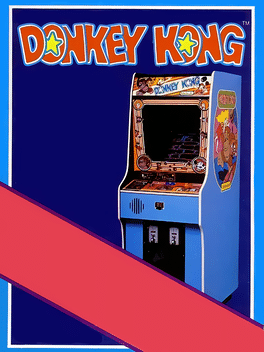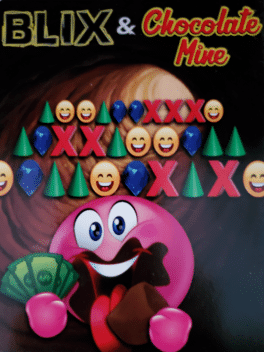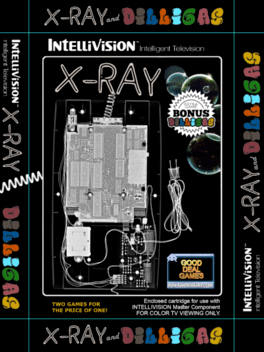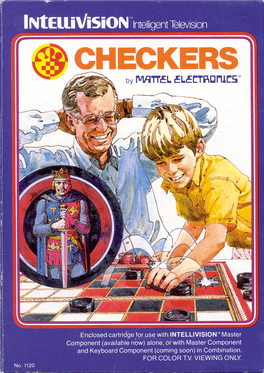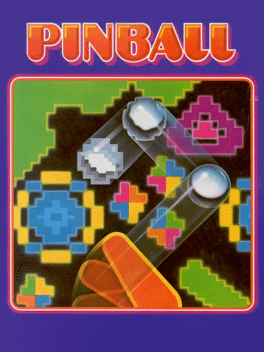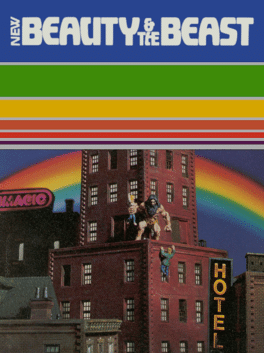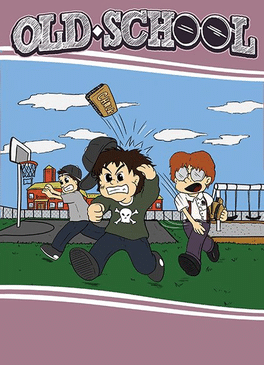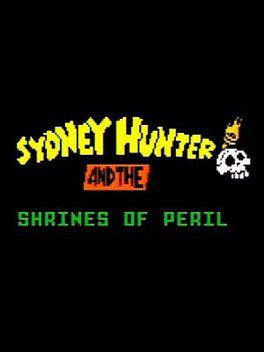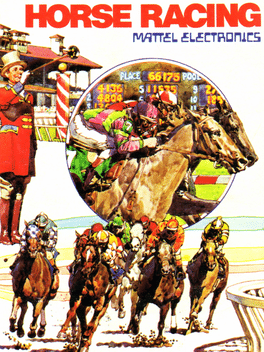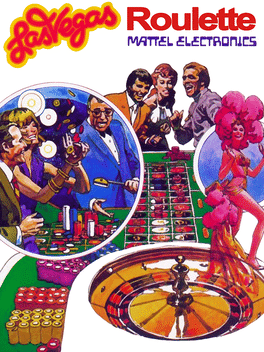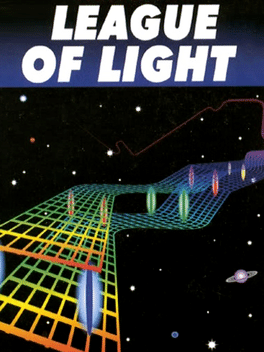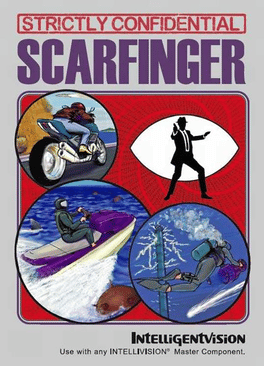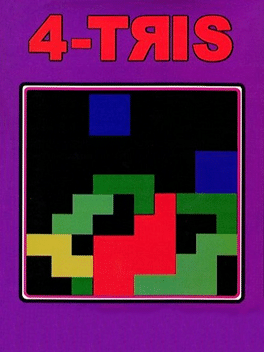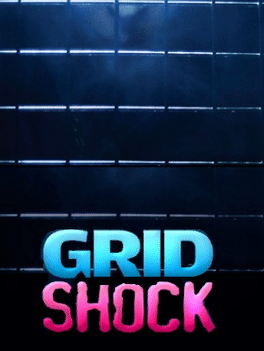Most Popular Intellivision Games - Page 3
-
Donkey Kong
1982
Donkey Kong
1982
The Donkey Kong port for Intellivision was developed by Coleco, and lacks 50m and 75m. It is also very visually different from the original arcade game. -
Blix & Chocolate Mine
2019
Two solitaire puzzle games on one cartridge. In Blix, shift three independent rows of shapes to match up three in a row vertically until your energy runs out. In Chocolate Mine, eat your way downward through chocolate to find dollar-shaped Shards of the One True Signature Piece. Use your radar to avoid hidden Jawbreakers as you go along. -
X-Ray & Dilligas
2021
X-Ray & Dilligas
2021
Two games on one cartridge. In X-Ray, fire x-ray beams into a grid to find hidden diffusers. In DILLIGAS, compete against the clock or another player as you partially control a bouncing object to capture targets and fill your reservoir. -
Fubar
2019
Fubar
2019
Everybody grab a paint roller and head for the canvas! It's up to you to out-paint your opponents before the time runs out! Play against your friends or the computer in your customized game. Choose different modes such as teams, elimination modes, top score, and more. With nonstop frenzied gameplay, you'll see why it's Fubar! -
Tennis
1980
-
Checkers
1980
Checkers
1980
Challenge Tradition! Beat a friend electronically for practice. Then go for it against the Ultimate Checker Player - a Wiley computer who asks and gives no quarter. - Two ways to play, vs. a friend or the ultimate competitor, the canny computer. - HI and LO skill levels when playing the computer. Added difficulty... added excitement. - "Bail Out" button - COMPUTER SUGGESTS MOVE, when you're stumped against the computer. - Simulated sound effects - BELLS, BUZZERS, A BRONX CHEER and a VICTORY TUNE. - No time limit on moves! - CLEAR button that lets you change your move! -
Pinball
1983
Pinball
1983
Pinball is a pinball simulation for one or two players. You begin the game with five balls, and need to score as many points as possible by hitting the ball into the various bumpers and targets on the pinball table. The pinball table consists of three different screens, each with a different layout and level of difficulty. To advance from one screen to the next, you need to use a single ball to hit several targets and then get the ball into a white cup that appears. If you are on the second or third screen and the ball falls off the bottom, you will be back to the lower screen; if the ball falls off the bottom screen you will lose that ball. The game ends when all five balls have been lost. -
Beauty and the Beast
1982
Beauty and the Beast
1982
Horrible Hank has grabbed Tiny Mabel and climbed the old Mutton Building. Only Bashful Buford can save her. Help him scale the building - but watch out for those rolling boulders! birds and bats swoop down on Buford, and he leaps over scurrying rats. If Buford catches a heart Tiny Mabel throws him, he becomes invincible! Keep track of how high Buford has climbed. You can see how many chances he has left to save Mabel - and how many buildings Buford has completed. Can you beat your own highest score? Keep climbing, dodging, leaping and lunging! Only you can help Bashful Buford save his little darlin'. -
Las Vegas Poker & Blackjack
1979
Las Vegas Poker & Blackjack is a computerized version of different types of Poker and Blackjack, including 7-Card Stud and 5-Card Draw. The player inputs how much "money" that is available to bet with. There is one and two-player games, and Las Vegas Poker & Blackjack includes a dealer to play against. Developed by John Brooks for APh Technological Consulting and published by Mattel Electronics -
Old School
2014
Old School
2014
In Old School, Poindexter the nerd takes revenge on bullies by lobbing chalkboard erasers at them. -
Horse Racing
1980
Horse Racing
1980
This game is for 1 up to 6 players. When the game begins, you can place the bets, for the winner or for the first and second place. Then you can choose if an horse must be driven by a player or by the CPU. Only the third and the fourth horse can be driven by the players. There are 3 types of terrain: turf, mud or dry. When the race begins, the horses are speedier at the beginning, slower toward the end. They are different for speed at the starting gate, stamina, speed at the straight line, and for speed with different conditions of the race terrain. You (and the CPU too!) have the whip and the coax to spur a horse, and these tools could be useful to win a race even with a more tired horse. -
Las Vegas Roulette
1980
Las Vegas Roulette
1980
Implements Las Vegas style roulette game. Most of the screen consists of the standard Las Vegas roulette betting table, and a moving strip on the top with wheel numbers on it represents the roulette wheel. Place your bets on the betting table, and spin the wheel. The game calculates your wins and losses. -
League of Light
2002
League of Light
2002
[Unreleased 1983] Maneuver down an abstract tunnel of colored light without crashing. Succeed and go on to a musical memory game: notes are randomly played that you must then play back using the hand controller keypad. Score points for how quickly you duplicate the series of notes. Then its back into the tunnel and on to a longer series of notes in the memory game. Russ Lieblich did the sounds and music for a number of games at Mattel Electronics (including Snafu) before going to Activision where he designed this game. Peter Kaminski, who programmed River Raid, helped Russ with the programming. It was finally released on the Intellivision Rocks! CD. -
Scarfinger
[Unfinished 1984] The last two agents we sent on this mission didn't come back. You're the only one we have left for the job. Mr. Andreas Skarfos, alias 'Scarfinger',has seized an island and set up a fortress there. He has a number of missiles capable of delivering nuclear warheads to any part of the globe, and unless we answer his demands, he will destroy us. His installations are all but invulnerable to surface attack, but we've discovered a tunnel which leads under the island. If one man could somehow reach the tunnel, they could stop Scarfinger! -
Easter Eggs
1981
-
Masters of the Universe II: Super Masters!
With the success of Masters of the Universe: The Power of He-Man, Marketing scheduled a sequel. Once again, the game would be in two parts, with one part assigned to Ray Kaestner and one to Rick Koenig. Ray and Rick developed some game screens using fancy new Intellivision effects, but no final name or plot for the game was agreed upon before Mattel Electronics closed. (Asked recently to describe his half of the game, Ray shrugged and replied "He-Man ran around fighting guys.") M Network versions were also scheduled for Atari 2600 and Colecovision, but little or no work was done on either. The screens Ray developed for Masters of the Universe II -- He- Man fighting bad guys on a multilevel 3-D game field with moving walls -- didn't go to waste; he recycled them in the INTV Corp. release Diner, a sequel to his game BurgerTime. -
Santa's Helper
1984
Santa's Helper
1984
Find and gather all the toys and gifts. Find the elf for extra points. Get all the gifts and join Santa in his sleigh. Drop gifts down chimneys as they scroll past below the sleigh. -
4-Tris
1999
4-Tris
1999
Tetraminoes are pieces created from 4 blocks joined together into 7 different patterns. By rotating them, you can position the pieces as they are falling so they fill open spaces. When an entire horizontal line fills with the pieces, the line clears and you are on your way to higher levels! Blocks will fall from the top of the screen towards the bottom. Arrange the pieces so that a row is completely filled by the blocks. Failing to do so will fill up the screen making it more and more difficult to clear rows. A cleared row will disappear giving you points and making game play easier. -
Grid Shock
1998
Grid Shock
1998
[Unfinished 1983] An arcade game. Carom your shots against the moving wall to fill in the pattern on the back grid. This original game by Andy Sells looked great; it had a strong 3-D effect as the moving wall swept back and forth across the screen. But while Andy wanted to continue developing the game, management wanted to take advantage of his musical talents. (Shortly before coming to Mattel, his award-winning song "You Love Love [More Than You Love Me]" was recorded by the English group Buck's Fizz. Ask for it by name.) Andy was continually assigned to work on music and sound effects for other games, including Shark! Shark! and TRON Solar Sailer. He also co-developed the Intellivision sound development tool, Mr. Sound. Whenever he had a chance he returned to Grid Shock, but the game was never elevated to official status. While the game never made it onto the Intellivision release schedule, it was demonstrated as part of the Intellivision III product line. This was bogus; when the Intellivision III wasn'
